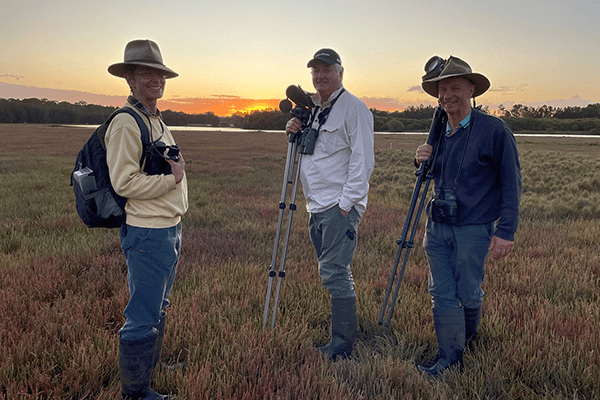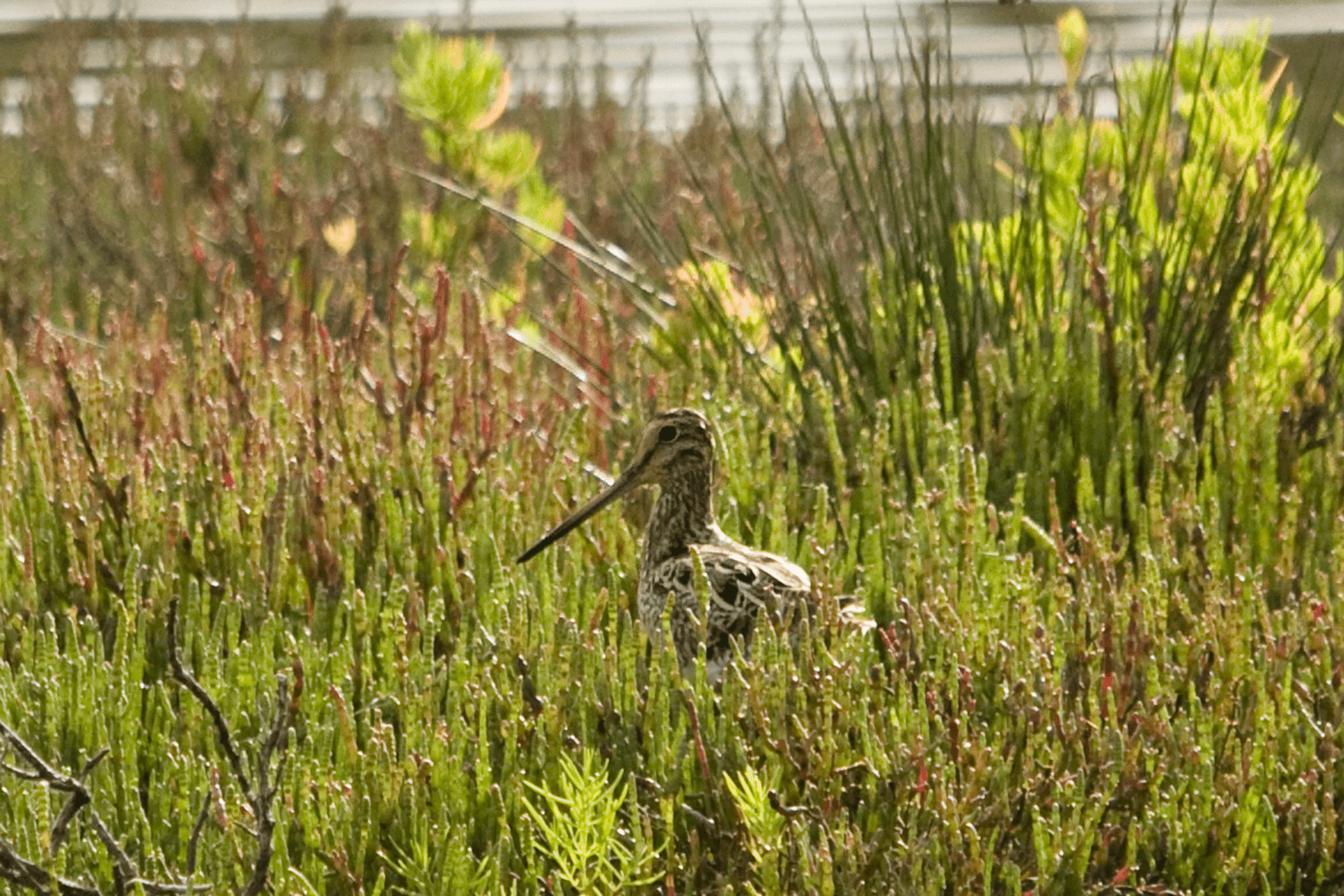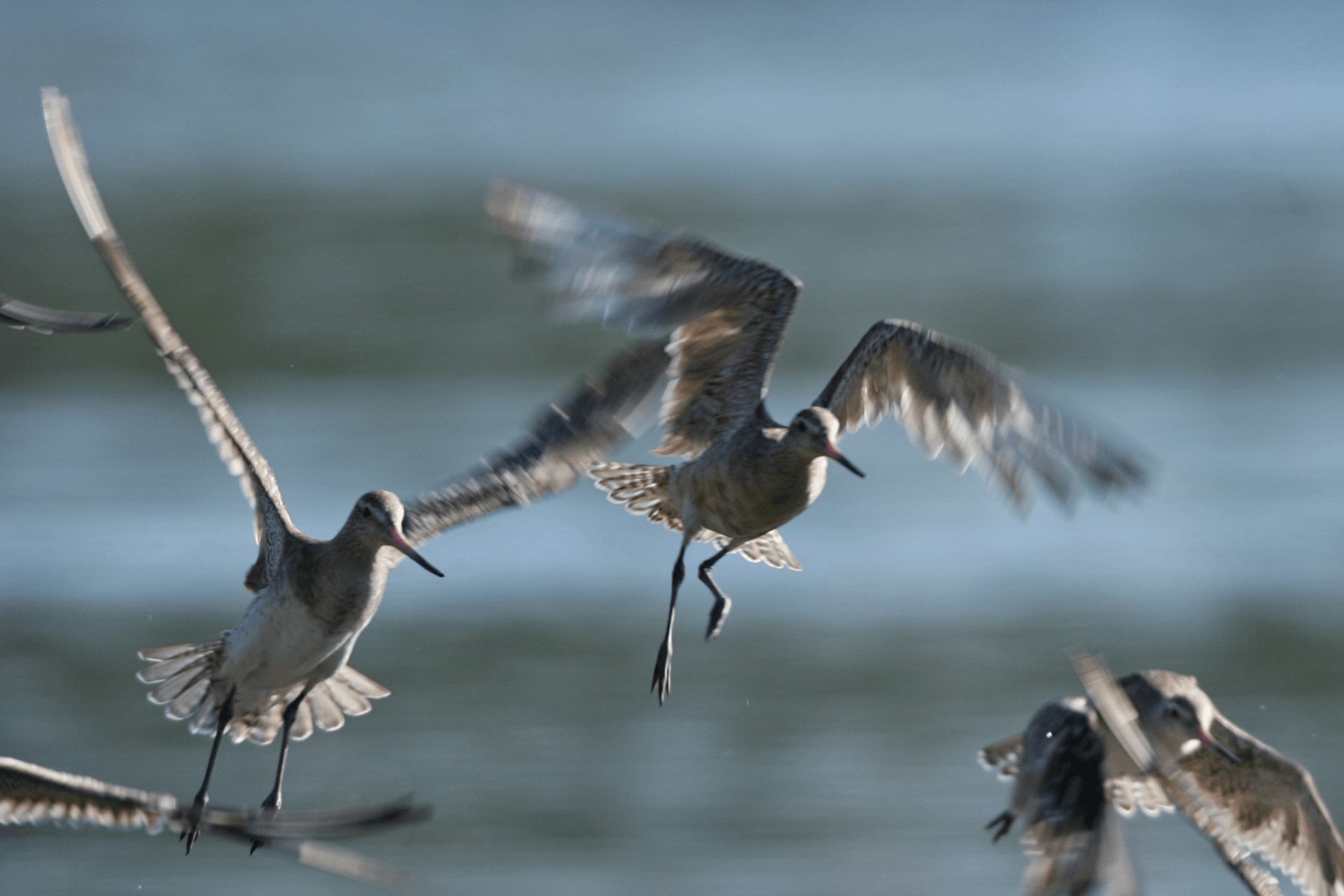Monitoring Migratory Shorebirds
Sydney Olympic Park’s wetlands, forests and grasslands are home to over 250 native species. Many of these are rare and threatened animals and plants so we work hard to ensure their survival.
A comprehensive suite of monitoring programs helps keep track of these species such as surveys of reptiles, frogs, birds, microbats, and endangered vegetation communities. Recently, staff and volunteers completed two annual bird surveys and here’s what we found.

Some of our wonderful volunteers who make the monitoring programs possible.
Latham’s Snipe monitoring
Latham’s Snipe is a migratory bird species that breed in Japan and southeast Siberia. From August to February, they spend their non-breeding season in eastern Australia. These shy birds prefer freshwater and estuarine wetlands with lots of vegetation for them to hide in during the day and at night they disperse to feed in nearby wet areas.
A GPS tracking study on this species found the birds travelled 20-30km to feed at night, leaving at 8pm and returning at 6am.
During recent surveys (three between September 2022 to March 2023), the highest number of snipes seen in a day was 10, and the average across three surveys was 8 snipes. This is slightly below the 10-year average of 12 birds, which could be due to the abundance of wetlands across eastern Australia resulting from higher than average rainfall.
Migratory snipes at Sydney Olympic Park are known to venture outside the Park to feed at night, while snipes from other areas may visit the Park during the day. Bird surveys were conducted in the evening to identify migratory shorebirds that use the Park’s wetlands at night.

A Latham’s Snipe in Coastal Saltmarsh © Geoff Hutchinson
Evening Waterbird Survey
Four surveys were conducted during the evening, from one hour before sunset to one hour after sunset. A record high of 7 snipes were observed in one wetland, suggesting it’s good for night feeding.
Additionally, 61 Bar-tailed Godwit were also recorded. This migratory shorebird species recently set the world record of non-stop flight. A young godwit only five months old flew 13,560km from Siberia to Tasmania non-stop, over 11 days and 1 hour! The Bar-tailed Godwits recorded during the survey comprised the majority of the total godwit count from another survey program in the Parramatta River estuary, highlighting the Park's significance as a crucial regional refuge for these impressive migratory birds.
These beautiful visitors can survive in the city because of the Authority’s commitment to protecting them and their habitat. Next time you’re in the Park, enjoy the knowledge that you’re sharing the space with a bird that flew over 10,000km to get here!

Bar-tailed Godwits can fly non-stop between Alaska and Australia © Jon Irvine